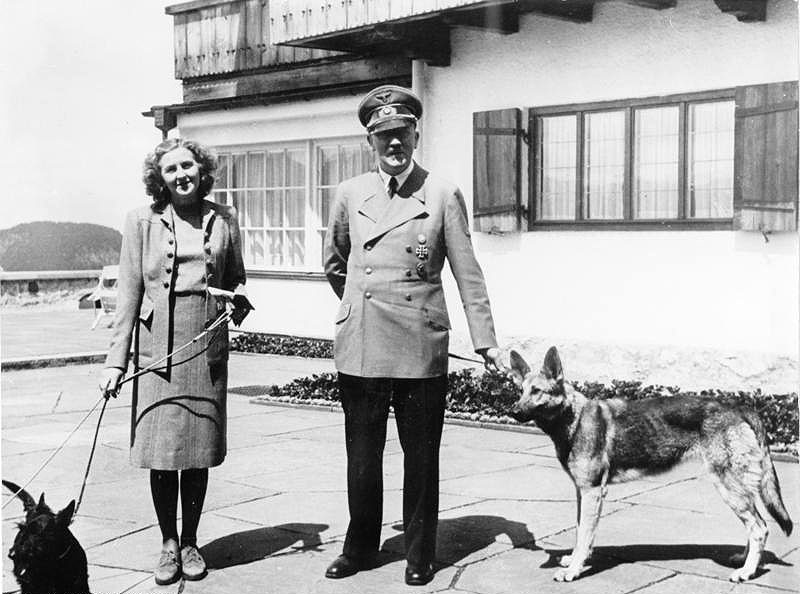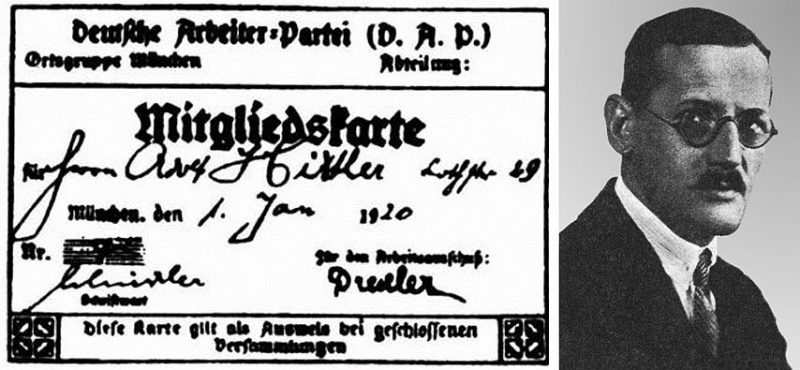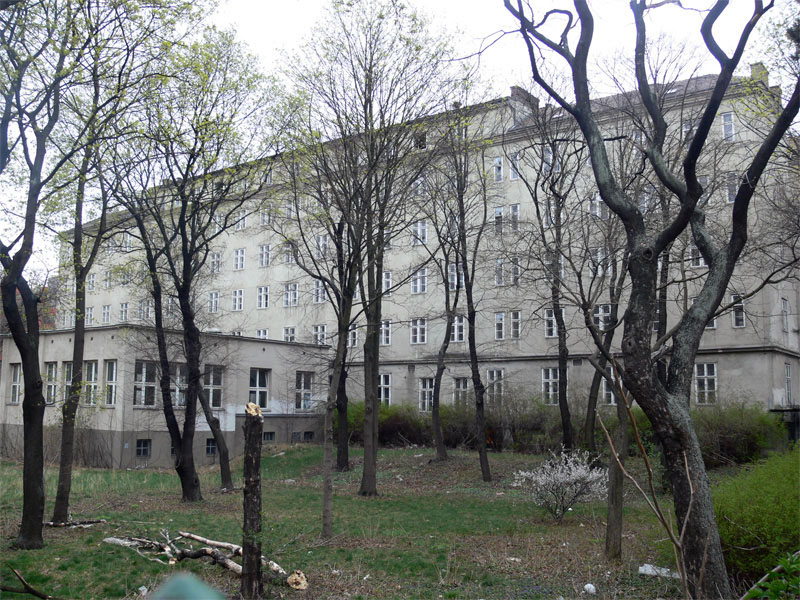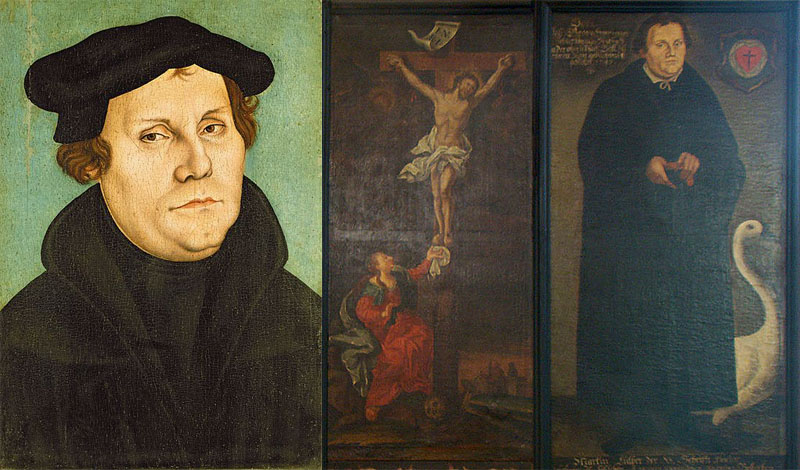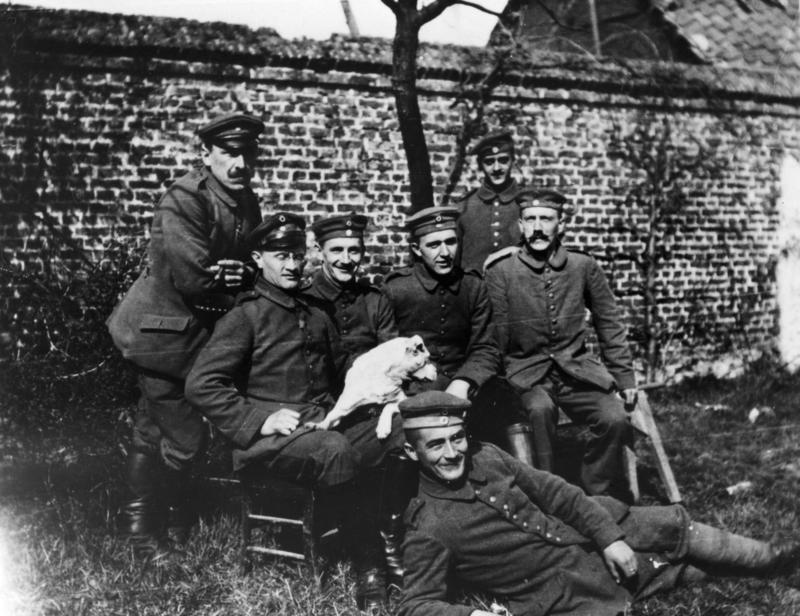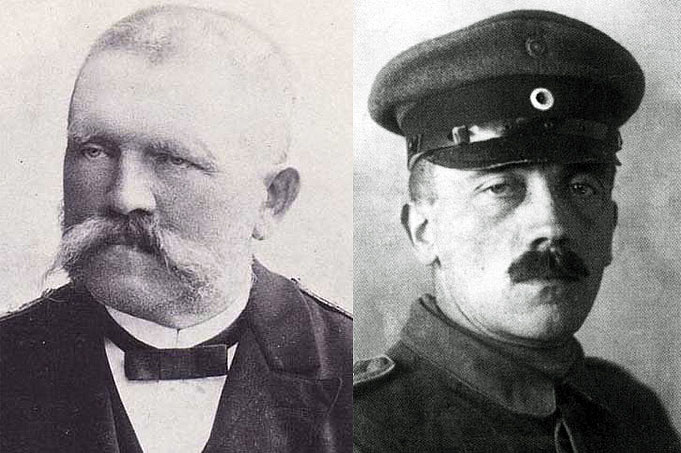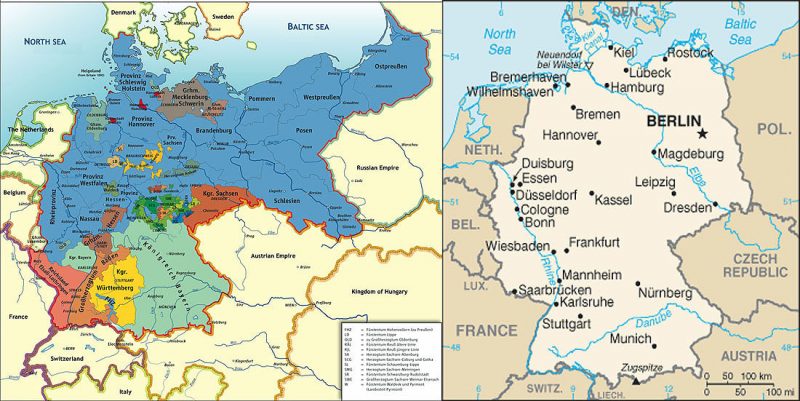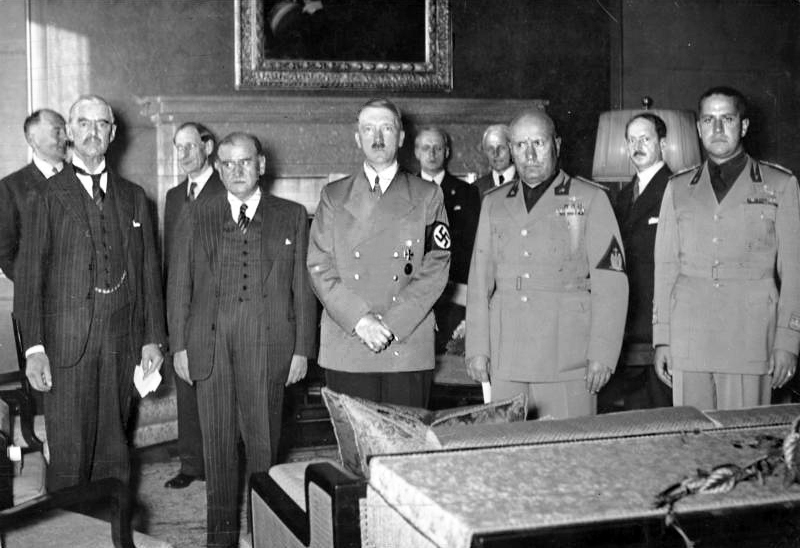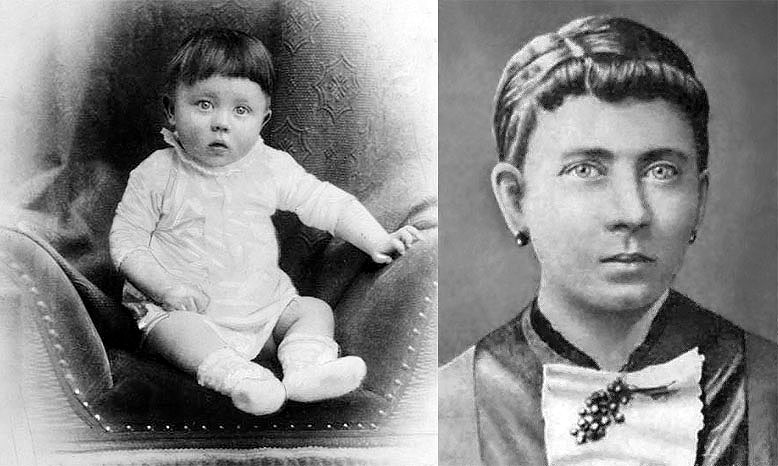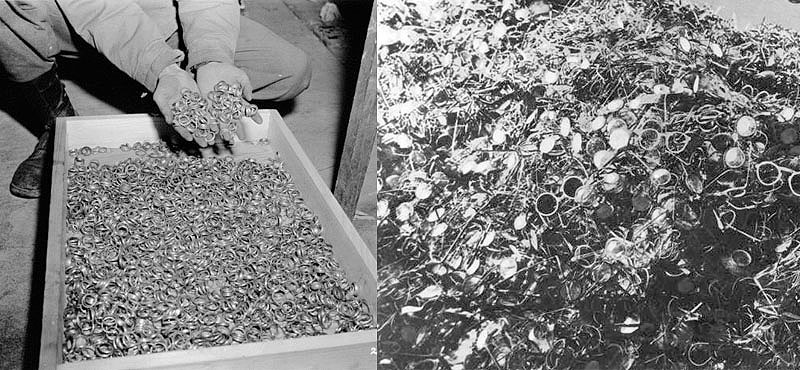Adolf Hitler, one of the worst dictators ever if not the worst in recorded human history, was responsible for 60 to 85 million deaths during the WWII as he had triggered the conflict. His name brings connotations of murder, misery, warfare, holocaust and the attempted extermination of the Jews and other minorities. Hitler openly expressed his hatred of Jews in his book ‘Mein Kampf’. He warned everyone about his intention to drive the Jews and minorities from Germany’s cultural, intellectual and cultural life.
Before invading Poland and triggering the WWII, Hitler gave example of Genghis Khan to his generals. He said that though Genghis Khan happily led millions of women and children to slaughter with predetermination, history still considered him solely the founder of the Mongol state; not as a murderer.
As a result of the Holocaust engineered by Hitler and his Nazi regime, 6 million Jews or around 78% of the total Jewish population (around 7.3 million) in Nazi occupied Europe at that time and an additional 5 million non-Jewish people were killed. From 1941 to 1945, Jews and other racial, political and ethnic minorities in Europe were targeted and systematically murdered by the Nazi forces.
Pan-German or All-German nationalist and anti-Semitic German Workers’ Party (DAP) became Nazi Party in 1919. Hitler became its chairman in 1921. Hitler’s Nazism was inspired by fascism that originated in Italy during the WWI. Nazism rejected any theories of the western capitalism and the Soviet socialism.
Hitler believed in an Aryan German race. Aryan race indicates to an Indo-European (European and Western Asian) Caucasian race and the racist term is used to indicate a white supremacy concept. Hitler also believed in Friedrich Nietzsche’s concept of the Übermensch or ‘Super-human’ who should rule above the slave-classes of the Untermensch or ‘inferior humans’.
Despite Hitler being the worst man and one of the most documented men in human history, there are still few less known facts about him. Popular entertainment website What Culture reported on 20 such mind-boggling facts about him.
(20) Hitler Spied On The Nazi Party Before Joining Them:
After participating in the WWI, Hitler returned to Munich and remained in the army due to having no formal education or career prospects. He was appointed Verbindungsmann or intelligence agent of a reconnaissance commando of Reichswehr in July 1919. Reichswehr was the military organization of Germany from 1919 to 1935. It was united with Wehrmacht, the unified armed forces of Germany in 1935.
Hitler was assigned to infiltrate the German Workers’ Party (DAP), which became the National Socialist German Workers’ Party or the Nazi Party in the same year. His task was to influence other soldiers and monitoring the activities of the DAP. Soon Hitler was attracted to the anti-Semitic, anti-capitalist, nationalist, anti-Marxist ideas of DAP’s founder Anton Drexler who also founded the Nazi Party in the following year. Hitler joined DAP in September 1919 becoming the 55th member of the party.
Images Used (From left): (1) A copy of Hitler’s DAP membership card (2) Anton Drexler, founder of both DAP and the Nazi Party
(19) Hitler Had To Live In Homeless Shelters For A While:
Like many Austrians, Hitler began to get attracted to German nationalist ideas from an early age. His father died when Hitler was 14 years old and subsequently, Hitler’s performance at school dropped. 2 years later he changed school and enrolled at a school in Steyr in Upper Austria. After giving a repeat, he passed the final school exams. His mother died of breast cancer at the age of 47 on December 21, 1907. At the age of 18-19, he was twice rejected admission into the Fine Arts Academy (in 1907 and 1908) as he was declared unfit for painting. While in Vienna, he tried to make a living out of selling his paintings. But due to lack of quality and resources, he ran out of money soon. Hitler kept moving from one place to another as his savings gradually diminished and his lifestyle deteriorated. In December 1909, he was half starved and freezing and had to live in homeless shelters in Vienna and whenever he sold a painting, he would occasionally spend the night in men’s hostels. He then moved into a public dormitory for men in Vienna and lived there for 3 years until 1913 when he received his father’s inheritance and then moved to Munich.
Image Used: The public dormitory for men in Vienna, where Hitler lived from 1910 to 1913. Image attribution- Edward Hopper, wikipedia
(18) Hitler Admired Protestant Reformer Martin Luther:
Protestant reformation was a religious division within Western Christianity that attempted to reform the Roman Catholic Church by criticizing its practices such as- selling of indulgences, Pope’s authority over purgatory, the Catholic doctrine of the merits of the saints etc. In Catholicism, purgatory is an intermediate state after death where people with ‘less sufficient’ level of holiness goes to undergo purification. The ‘Merits of saints’ is a Catholic belief that states that the merits of Jesus Christ, his faithful and the communion of saints can benefit others too. These reformations were initiated by Martin Luther, John Calvin and others. Lutherans and Calvinists are two major branches of Protestant Christianity. Lutheran Churches were mostly founded in Germany as Martin Luther was a German friar and he initiated the movement in the 16th century.
During his stay in the men’s hostel, Hitler reportedly criticized the Germanophobia of the Catholic Church. He said that Catholic Church had spilled more blood than any other religion. Despite he was brought up as a Catholic during his childhood, he despised Christianity and especially the papacy. But he admired Luther.
Image Used (From left): (1) Portrait of Martin Luther in 1528 by German painter Lucas Cranach the Elder. (2) Illustration of Luther with Christ crucified
(17) Hitler Was Awarded the Iron Cross First Class:
According to historians, Hitler avoided joining the Austro-Hungarian army during WWI. He later claimed that the ‘mixture of races’ in the Austro-Hungarian army was the reason behind his decision. He was living in Munich at the outbreak of WWI and he joined the Bavarian Army as an Austrian citizen. He was posted to the Bavarian Reserve Infantry Regiment 16 and served as a dispatch runner or messenger on the Western Front in Belgium and France. Nearly half of his time in the WWI, he was well behind the front lines. However, he participated in the First Battle of Ypres, Battle of Arras, Battle of the Somme, Battle of Passchendaele. Hitler was wounded during the Battle of the Somme.
Hitler discovered his love for Germany during the First World War. Due to his contribution in the war, he was awarded the Iron Cross, Second Class in 1914. Hitler’s Jewish superior, Lieutenant Hugo Gutmann recommended for him and Hitler was awarded Iron Cross First Class on August 4, 1918 despite being a member of the Gefreiter, the second lowest rank in German Army.
Image Used: Hitler (far right, seated) with his Bavarian infantry regiment comrades during WWI. Image attribution- Bundesarchiv, wikipedia
(16) Hitler’s Original Family Name Was Schicklgruber:
Hitler’s father Alois Hitler was the illegitimate child of Maria Anna Schicklgruber. Alois was born in 1837 but the baptismal register did not show his father’s name. So, initially, Alois bore his mother’s surname, Schicklgruber. Johann Georg Hiedler married Maria Anna in 1842.
Maria Anna died in 1847 and Alois changed his baptismal register in 1876 by recording Georg Hitler (Johann Georg Hiedler) as his father. Thus he assumed the surname Hitler which is also spelled as Hiedler, Huettler or Hüttler. Hitler surname is presumably based on ‘one who lives in a hut’.
Images Used (From left): (1) Hitler’s father Alois Hitler initially bore the surname Schicklgruber (2) Hitler during WWI
(15) For Seven Years, Hitler Was ‘Nationless’:
Hitler later stated his goal for a Großdeutschland (Greater Germany). However, he was an Austrian by birth. From a young age, he longed to be a part of the German Empire and despised the Austro-Hungarian Empire and its Habsburg Monarchy. He had formally renounced his Austrian citizenship in April, 1925 but did not obtain German citizenship immediately. He became stateless, faced the risk of deportation and was unable to run for public office.
Interior minister of Brunswick state in Germany was a member of the NSDAP or Nazi party. He appointed fellow party member Hitler as an administrator for the state in February 1932. Thus Hitler became a citizen of Brunswick and thus of Germany. He had been stateless for almost seven years.
Images Used (From left): (1) The map of German Reich from 1871 to 1918, showing the German and Austro-Hungarian Empire, Image attribution- Wiggy!, Wikipedia (2) Map of Germany today
(14) One Of Hitler’s Hobbies Was Whistling ‘When You Wish Upon A Star’:
Hitler reportedly relaxed by whistling tunes including ‘when you wish upon a star’. He entertained dinner guests by whistling and performed the hobby in moments of euphoria- such as following the fall of Paris in June 1940.
‘Who’s Afraid of the Big Bad Wolf’ was also of his favorite tunes due to ‘The Wolf’ being his nickname. When the Germans had started to retreat from Russia, Hitler became forgetful and preoccupied. During that time, once he was whistling even while eating.
(13) Hitler Was Temporarily Blinded At Least Once In a Gas Attack:
Hitler was temporarily blinded in a mustard gas attack on his camp on October 15, 1918 during the WWI. He was hospitalized in Pasewalk in Germany. And while there, he learned of Germany’s defeat and Armistice with Britain and France. He reportedly said that he had suffered a ‘second temporary blindness’ upon hearing such horrifying news for the Germans.
Image Used: British soldiers wearing Gas masks in the Western Front in 1916, ready to play football somewhere in Northern France in leisure time
(12) Hitler Most Likely Had Parkinson’s Diseases:
Researchers have suggested that Hitler suffered from a number of diseases including- Parkinson’s disease. Some described him as a neurotic psychopath. Parkinson’s disease is a degenerative disorder of the central nervous system that affects the movement, memory pattern, thinking and behavior of the patient.
It is reported that for the last 11 years of his life, Hitler suffered from mental and physical symptoms of the Parkinson’s disease. Some historians argued that his decision making was affected during WWII due to his possible dementia or memory loss as a result of the disease.
Video Used: Video evidence regarding symptoms of Hitler’s Parkinson’s disease
(11) Hitler Never Visited a Single Concentration Camp:
Most of the 11 million Jews and other minorities killed during the Holocaust by Hitler’s Nazi forces were murdered at the 1,200 Nazi concentration camps. The first Nazi concentration camp was established in Germany in 1933 immediately after Hitler became Chancellor of the party. The first camps were initially used to hold and torture union organizers and political opponents.
During the WWII, these became the places where millions of ordinary people and so called ‘racially undesirable’ minorities were enslaved, used as forced labor in the war industries, tortured and then brutally murdered in mass numbers.
Hitler never visited a single death camp. Though most of the camps were built in the east, still it is a surprising fact. The distance Hitler kept between himself and the spot of actual killing has fueled the claims made by the neo-Nazi supporters that Hitler was not responsible for the holocaust and that Himmler kept him in the dark about what was taking place. However, Hitler’s involvement in the genocide can be found at every stage of the ‘Final Solution’, a program aimed at murdering every last Jew within German controlled territories.
(10) Hitler Was Selected Time Magazine’s Man of the Year for 1938:
Hitler, Chamberlain, French Prime Minister Édouard Daladier and Mussolini attended a one-day conference in Munich on September 29, 1938. British Prime Minister Neville Chamberlain appeased Hitler and convinced British and French politicians to accept some of Hitler’s territorial claims in exchange for the assurance of no further aggression from Germany in an agreement called the ‘Munich Agreement’. As Germany had been granted the German speaking Sudetenland region of Czechoslovakia as per the agreement, it was perceived at that time to be a successful preventive measure against a possible outbreak of a world war. Due to the Munich summit, Hitler was selected ‘Man of the Year’ by Time magazine for 1938, a premature attribution beyond doubts.
Chamberlain’s policy of appeasing Hitler was soon proved to be a fatal error as Hitler kept annexing European territories by force and Chamberlain lost confidence from all corners.
Image Used (From left): Chamberlain, Daladier, Hitler, Mussolini, and Italian foreign minister Ciano photographed before signing the Munich Agreement in 1938
(9) Hitler Seriously Wanted to Become a Priest During His Childhood:
Hitler was born to a practicing Catholic mother and an anticlerical father. When Hitler was 8 year old he used to sing in church choir and took singing lessons to improve his vocals. He even aspired to become a priest.
However, later he favored some aspects of Protestantism. According to a U.S. Strategic Services report, Hitler planned to destroy the influence of Christian churches in German held territories. His intention to eliminate Christianity indicates that he became an atheist to the very core.
(8) 3 of Hitler’s 6 Siblings Died During His Childhood:
Hitler had six siblings and four of whom died before his 25th birthday. He was the fourth children to Alois Hitler and Klara Pölzl. His all 3 older siblings- Gustav, Ida and Otto died in infancy.
Images Used (From left): (1) Adolf Hitler as an infant photographed in 1889 or 1890 (2) Hitler’s mother Klara Pölzl photographed in her childhood in around 1875
(7) Hitler Made Laws Against Animal Cruelty:
It seems quite strange considering the numerous atrocities against human beings he ordered in his lifetime, he despised animal cruelty.
He followed a vegetarian diet. Moreover, at social events he sometimes narrated graphic accounts of animal slaughtering in an effort to discourage his dinner guests to eat meat. There was a dedicated greenhouse build near his home in Obersalzberg in Bavaria to ensure a constant supply of fresh vegetables and fruits for him throughout the war. There is a legend that Hitler put off meat when he was young as a result of witnessing an autopsy and became determined in protecting animal rights.
He helped implement wild animal, cattle and chickens protection laws and intended to reduce meat consumption by the Germans after the Second World War.
He also avoided alcohol and occasionally drank beer and wine in private. Due to gaining weight he gave up drinking in 1943. He smoked heavily in his youth; 25 to 40 cigarettes a day. Eventually he quit and remained a non-smoker most of his life. He called smoking ‘a waste of money’.
Image Used: Hitler, his mistress Eva Braun with their Dogs; a ‘German Shepherd’ next to Hitler. Image attribution- Bundesarchiv, Wikipedia
(6) Hitler Proposed The “Museum Of An Extinct Race”:
Hitler wanted to exterminate the entire Jewish race which is widely documented everywhere. His Nazi regime oversaw the genocide of six-million Jews. However, he did not want to eliminate memory of the Jews completely.
He ordered to retain the paintings, artifacts and valuable belongings of any Jews murdered. He wanted to create a museum for the German ‘Aryan race’ to come and watch such artifacts. He wished to call it ‘Museum of an Extinct Race’.
Images Used (From left): (1) Some gold rings of the Jews who were victims of Nazi concentration camp; German Central Bank used these loots (2) The spectacles of victims from the Auschwitz Nazi concentration camp
(5) Hitler Used to Take Cocaine Twice a Day as Prescribed:
Drugs were administered to Hitler on a regular basis and he used a cocktail of drugs including cocaine. He was prescribed to take cocaine twice a day.
He used an inhaler to take powdered cocaine regularly to aid his throat and sinus problems throughout his tenure as Führer of Germany. He also used eye-drops mixed with 10 % cocaine. Hitler’s physician Dr. Theodore Morell was responsible for prescribing these drugs and US interrogators wondered whether Morell was a double agent trying to make Hitler dysfunctional.
(4) Hitler Was Nominated For Nobel Peace Prize in 1939:
Stalin and Hitler both of these shady characters were nominated for the Nobel peace prize, the most distinguished award given to people who work towards world peace. Stalin was nominated in 1945 and 1948 for his contribution to end the Second World War.
However, Hitler’s nomination was supposed to be an irony and a joke. EGC Brandt, a member of the Swedish parliament nominated Adolf Hitler for the peace prize in 1939. His intention was to satirically criticize the Swedish government, but it was not well received and he was forced to withdraw the nomination.
There were more controversies earlier, when German pacifist Carl von Ossietzky was awarded the 1935 Nobel Peace Prize. Ossietzky publicly opposed Hitler and Nazism. So, Hitler was offended when one of his enemies convicted of high treason and espionage had been awarded the prize. Hitler then forbade any German to receive any Nobel Prizes in the future and German press was also not allowed to mention anything about the prize. Hitler’s decree prevented three German scholars from accepting their Nobel Prizes- Gerhard Domagk in Physiology in 1939, Richard Kuhn in Chemistry in 1939 and Adolf Butenandt in Chemistry in 1939.
(3) Hitler Was Injected with Extracts from Prostate Glands and Testicles of Young Bulls:
Besides prescribing cocaine and other drugs, Hitler’s physician Morell also reportedly injected Hitler with extracts from prostate glands and testicles of young bulls to boost his sexual drive. Morell used to give Hitler a medication called Testoviron, a type of testosterone preparation, usually before the Führer was going to spend the night with his mistress Eva Braun.
Some historians speculated that Hitler’s extreme war mongering was influenced by his drug addiction prescribed by Dr. Morell. Upon capturing Morell, the Allies accused him of criminal negligence. Morell confessed of giving opiates, barbiturates (sleep inducing drugs derived from barbituric acid), morphine and amphetamines (mood altering stimulant drug) to Hitler.
(2) Hitler Pioneered the Blow-up Dolls:
Hitler reportedly ordered the manufacture of Aryan blow-up dolls for his Nazi combatants to discourage them from sleeping with disease-ridden prostitutes. It was called the ‘Borghild Project’ that kicked off in 1940 when SS Chief Himmler wrote to Hitler warning him of syphilis and other health hazards posed to his men by liaisons with the French women.
The top-secret project delivered 50 dolls to the Nazi troopers. Each soldier was supposed to put a blow up doll in his pack and then they could do with them as they pleased. But embarrassed soldiers refused to carry the comfort dolls and officers were worried that the Nazi combatants would be mocked if captured by the enemy along with the blow-up dolls. By 1942, the Nazi party leadership had shut down the project.
(1) Hitler Shaved Part of His Moustache Because His Full Moustache Nearly Killed Him:
Hitler’s toothbrush style moustache was not always like this. During WWI he had full moustache. Soldiers in trenches were experiencing mustard-gas and other lethal gas attacks during the WWI and respiratory masks were provided to the combatants to keep out gas. But during gas attacks, Hitler could not create complete airlocks pulling his respiratory mask over his face due his long moustache and he almost died due to presence of gas in his mask.
As a result, Hitler’s supervisors ordered Hitler to remove his fancy moustache to facilitate the wearing of the gas masks. But instead, he trimmed it to the distinctive toothbrush shaped style.
